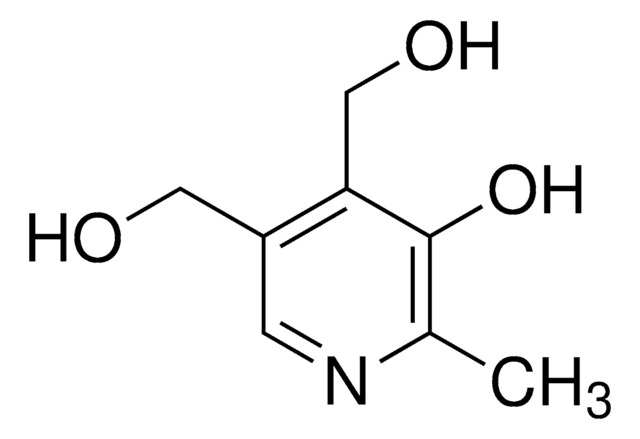Kluczowe dokumenty
T1270
Thiamine hydrochloride
BioReagent, suitable for cell culture, suitable for insect cell culture, suitable for plant cell culture
Synonim(y):
Aneurine hydrochloride, Vitamin B1 hydrochloride
About This Item
Polecane produkty
pochodzenie biologiczne
synthetic (organic)
Poziom jakości
linia produktu
BioReagent
Próba
≥99.0% (HPLC)
Formularz
powder
masa cząsteczkowa
Mw 337.27 g/mol
metody
cell culture | insect: suitable
cell culture | mammalian: suitable
cell culture | plant: suitable
kolor
white
mp
250 °C (dec.) (lit.)
rozpuszczalność
H2O: 50 mg/mL, clear, colorless
Zastosowanie
agriculture
ciąg SMILES
CC1=NC(N)=C(C[N+]2=CSC(CCO)=C2C)C=N1.Cl.[Cl-]
InChI
1S/C12H17N4OS.2ClH/c1-8-11(3-4-17)18-7-16(8)6-10-5-14-9(2)15-12(10)13;;/h5,7,17H,3-4,6H2,1-2H3,(H2,13,14,15);2*1H/q+1;;/p-1
Klucz InChI
DPJRMOMPQZCRJU-UHFFFAOYSA-M
Szukasz podobnych produktów? Odwiedź Przewodnik dotyczący porównywania produktów
Opis ogólny
Zastosowanie
- of the vitamin-concentrated stock solution for the preparation of Hv-Ca medium for culturing Haloferax volcanii
- of the tris-acetate-phosphate (TAP) medium for culturing Chlamydomonas nivalis
- of modified Bold 3N medium for culturing Chlorella minutissima
Działania biochem./fizjol.
Hasło ostrzegawcze
Warning
Zwroty wskazujące rodzaj zagrożenia
Zwroty wskazujące środki ostrożności
Klasyfikacja zagrożeń
Eye Irrit. 2
Kod klasy składowania
11 - Combustible Solids
Klasa zagrożenia wodnego (WGK)
WGK 1
Temperatura zapłonu (°F)
Not applicable
Temperatura zapłonu (°C)
Not applicable
Środki ochrony indywidualnej
Eyeshields, Gloves, type N95 (US)
Wybierz jedną z najnowszych wersji:
Masz już ten produkt?
Dokumenty związane z niedawno zakupionymi produktami zostały zamieszczone w Bibliotece dokumentów.
Klienci oglądali również te produkty
Produkty
How thiamine and other cell culture components affect the performance of serum-free, protein-free cell culture systems used for biomanufacturing heterologous proteins including monoclonal antibodies. The page introduces the in vitro chemistry and biochemistry of thiamine.
Neoplastic cells are highly dependent on the de novo synthesis of nucleotides to maintain sufficient pools to support DNA replication and the production of RNA.
Nasz zespół naukowców ma doświadczenie we wszystkich obszarach badań, w tym w naukach przyrodniczych, materiałoznawstwie, syntezie chemicznej, chromatografii, analityce i wielu innych dziedzinach.
Skontaktuj się z zespołem ds. pomocy technicznej







